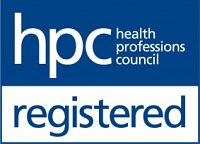FAQs
- What is Orthotics?
- Why orthotics?
- What happens at the appointment?
- Will orthotics correct my problem?
- Will orthoses fit in all my shoes?
- After wearing my orthosis, my legs and back were sore, is this normal?
- Will I need physiotherapy?
- What is pronation?
- What is ‘Shin Splints’?
- What can you do to prevent shin splints?
- What should you do if you suffer from shin splints?
- My Child's Splints do not fit?
- How are the Orthotics made?
- What type of Orthoses do you provide?
- What is “gait analysis”?
What is Orthotics?
Orthotics is a branch of mechanical and medical science that deals with the support and bracing of weak or ineffective joints or muscles.
An Orthosis is an extensively used non-invasive external appliance that accommodates the afflicted body part in the appropriate position. This helps correct movement and prevents unwanted movement to assist the body. Therefore orthoses can control, assist, prevent deformities or accommodate painful areas of any body segment in both the upper and lower limbs as well as the spine. Sciences such as materials engineering, gait analysis, anatomy and physiology, and psychology contribute to the work done in the field of orthotics. Foot orthoses are the most common devices that are worn inside the shoe in order to correct, support and control abnormal foot function. Orthoses that are prescribed and custom made for your feet should not be confused with ‘over the counter’ arch supports although these may occasionally help with minor arch discomfort.
Why orthotics?
It is estimated that 70% of the population suffer from ‘excess pronation’ due to biomechanical deformities which are exacerbated by the unnatural, hard flat surfaces we walk on today. In active individuals the ‘excess pronation’ can disrupt the function of proximal joints (the knee and hip) which increases forces on the lower back muscles. The aim of any foot orthosis is to align the lower limb to ensure correct foot function and help relieve common biomechanical complaints.
What happens at the appointment?
- Assessment appointment includes:
- Discussion of your expectations and personal goals, detailing pertinent and relevant past history
- Dynamic and Static gait analysis
- Appropriate physical assessment
- Discussion of achievable and realistic goals to form the personal treatment plan
- Fitting (if necessary):
- Evaluation of the fit and function of the device before completing the manufacturing process
- Supply appointment includes:
- Ensure the fit is appropriate and comfortable
- Ensure the function and control is correct
- Review appointment includes:
- Occurs after the supply appointment and additionally on request
- Feedback taken from the patient, parents and carers
- Re-assess the aims of treatment
- Minor alterations made if needed
Will orthotics correct my problem?
Orthotics can change the underlying structure of the body if it is still developing. However, if the area is fully developed an orthosis will control the position and motion of that part of the body. This may prevent the development of pain and disability, and the development of additional deformity. However, if you decided to stop wearing them, the body may will return to the original position and abnormal function and pain can return.
Will orthoses fit in all my shoes?
In most cases they will, however, some shoes will not fit properly with an orthosis inside. These are usually dressy shoes with a shallow heel counter (i.e. the rear part of the shoe that wraps around the heel). Women have more fitting problems than men, due to shoe fashion. It is possible to find dress shoes that can accommodate an orthosis, but choices will be more limited. There are specific orthoses that fit more easily into fashionable shoes which can be discussed at your appointment.
After wearing my orthosis, my legs and back were sore, is this normal?
Some people develop discomfort in the foot, leg, or lower back when they first start to wear orthoses. This is normal and is due to a realignment of the whole lower extremity and pelvis. Muscles and ligaments have to readjust to this new alignment and most patients will experience intermittent moderate aches and pains. This discomfort typically disappears after two or three weeks.
Will I need physiotherapy?
In most cases physiotherapy will continue to compliment any Orthotic treatment, Feet First clinicians can recommend specialist Sports Injury and Paediatric Physiotherapists.
What is pronation?
Pronation is a complex motion including outward rotation of the heel and inward rotation of the ankle. Normal pronation, or “rolling inward” of the foot is necessary as the foot adapts to uneven ground. Excessive pronation however causes the arch to flatten and soft tissues such as ligaments to stretch. Excessive pronation causes the joint surfaces to function at unnatural angles to each other, resulting in increased ‘wear and tear’ manifesting itself as pain.
What is ‘Shin Splints’?
‘Shin Splints’ is an umbrella term often used to describe exercise-induced stress reactions upon structures in the lower leg. These structures include bone, muscle, tendon and connective tissue. Shin splints are generally associated with over-use and are a common sporting injury.
What can you do to prevent shin splints?
You will reduce your chances of developing shin splints by wearing the correct footwear for your chosen activity. If you are in doubt as to what trainer type you require, please see a qualified specialist such as an Orthotist, Podiatrists or seek opinion form Physiotherapists and specialist sport shops.
Sudden increases in training can trigger shin splints. A runner should increase the mileage by 10% a week, harder running sessions such as interval work or hill running also need to be introduced with care. Rest days must be incorporated into a training programme, when high intensity sessions are being undertaken.
What should you do if you suffer from shin splints?
Follow the RICE protocol: Rest, Ice, Compress and Elevate. If you have had the pain for more than six weeks or you suffer from recurrent shin splints it is likely that you have a biomechanical problem that will require careful diagnosis and specialist treatment.
My Child's Splints do not fit?
If your child has been provided AFOs (foot splints) from elsewhere which are causing discomfort or you are unable to find suitable accommodative footwear, don’t despair please contact us. There may be multiple reasons why this is occurring, most of which can be overcome with some simple modifications or advice whilst maintaining the original aims.
How are the Orthotics made?
Feet First Clinical Service orthoses are manufactured in partnership with a leading edge manufacturing company using modern CAD CAM scanning and innovative carving equipment. Frequent visits to the manufacturing lab by our clinicians ensure a close working relationship with the manufacturing team to ensure a quality product is produced every time.








